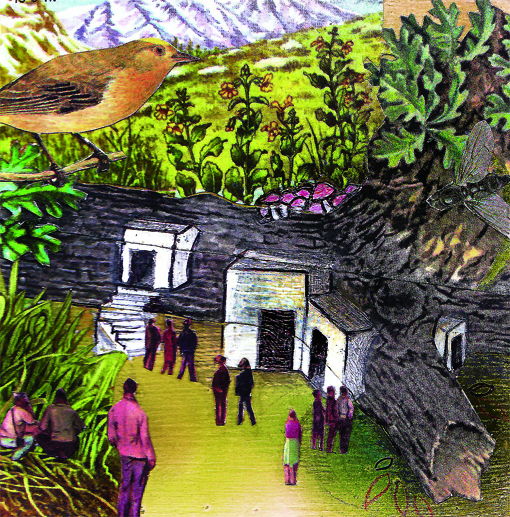On Dead Malls
Posted on November 5, 2010 | posted by:
A few years ago there was a popular interest in contemporary ruins, specifically dead malls. I saw numerous malls from my childhood leveled in the interest of urban planning. Rising in their ashes were the likes of new urbanism and mixed use suburban-urban city centers. I was interning at the Museum of Contemporary Art Denver (MCA Denver) in 2003 when they opened the group show “Elegy: Contemporary Ruins.” Ron Pollard, an architectural photographer, exhibited a series of inkjet images of Cinderella City, an aging mall located in the suburbs south of Denver. The tragedy of this 30-year old mall was that it solicited “no protests demanding rehabilitation, no pleas for a face lift, no mourners.” Soon after, it too was demolished.
Recently, I attended a lecture at SVA in which an NYC urban planning and advocacy group named Interboro presented many projects and proposals including a piece from 2002 entitled “In the Meantime, Life with Land Banking.” This project was the winning entry to the LA Forum for Architecture’s Dead Malls Competition. They rejected the idea of a traditional master plan and instead recommended a collection of small, cheap, feasible moves. These would come over time and lead to many possible futures. Interboro’s documentation, analysis and recommendations are of interest to me as a designer. As I try to understand infrastructures and systems, I look to these same skill sets as guides.
The Duchess Mall, located in Fishkill New York, was the subject of Interboro’s observation and intervention. Over the years, Duchess Mall went from thriving to dying. The current landlord is land banking the property in anticipation of inevitable urban growth and profit if and when the market turns around. What was surprising to me through the accounts told by Interboro was what was happening in the meantime. Through Interboro’s extensive research and documentation, the meantime came to be realized. With Interboro’s help, people and businesses were thriving not in spite of the dying mall, but because it was dying. An emergent culture had sown its seeds as this fallen creature. New kinds of public spaces were emerging from the absence of the density of a once popular and profitable shopping mall. The parking lot had become an informal rest stop and as a result, an entrepreneurial RV began selling hotdogs to truckers. In another case, a bus service teamed with a dry cleaner to become an impromptu bus station. Still many other cases were emerging: a flea market on the weekend filled the parking lot; the local birdwatching society gathered for events; and Appalachian Trail hikers use the spot as a trailhead.
Various stakeholders of the makeshift meantime mall culture, cobbled together a highly adaptable economy defined by local community needs rather than outside commercial interests. The mall was no longer a mall, but altogether something else. It was no longer a destination for the consumption of unneccesary objects or commodity, but an incubator for niche communities and ragtag groups. Interboro wanted to preserve, support and amplify these features. Their design aimed to be small, cheap and feasible — to build on the casual relationships already in place. They generated multiple solutions based on firsthand research. Here’s just a few:
– A night club or a summer stage that would take advantage of the supply of space and lack of neighbors.
– A fitness center and sculpture garden that would reinterpret the parking lot as a node of community life in a car focused region.
– “Plug-in units” (modular office spaces) complete with bathrooms and copy machines, which could retrofit into loading docks and old retail spaces on the periphery of the mall.
In addition to these proposals of many viable and accesible solutions to support the emerging activities around the Duchess Mall, Interboro also took the process one step further and speculated about the stakeholders futures, from the owner of the dry cleaner to the proprietor of the night club. In regards to their process, I would like to site them as an example of a job well done. I see this as a successful study of an infrastructure, resulting in a novel intervention that supports emergent behavior and bottom-up organization.
As we design and create our own new nature, we must also understand how to reuse the decay of our own buildings and structures. In nature, trees fall and become “nurse logs” which foster and birth new trees and growth. We will hopefully become more aware of how to encourage new growth in our shifting populations, take cues from the emergent communities there and demand and advocate for new exchanges in urban and suburban architecture.